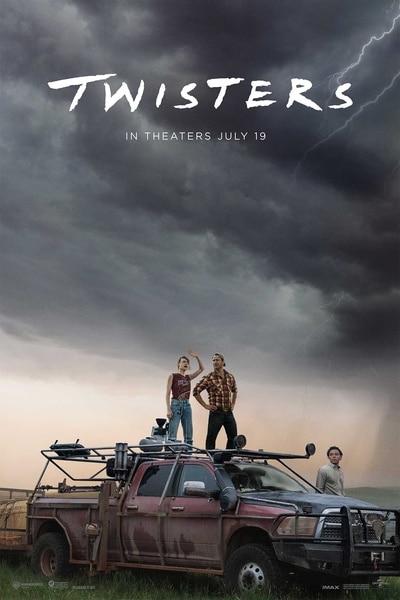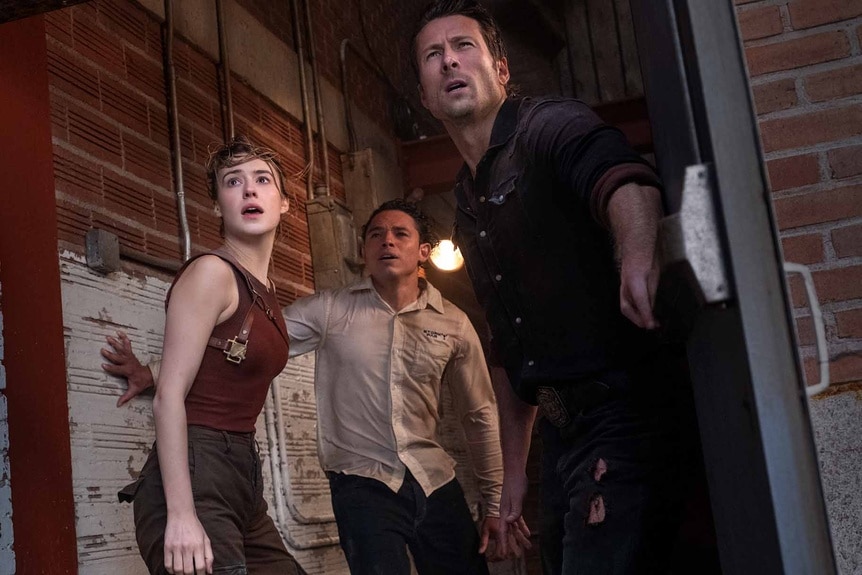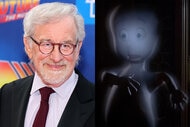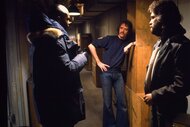Create a free profile to get unlimited access to exclusive videos, sweepstakes, and more!
Do Fire Tornadoes Really Exist? The Science Behind Twisters' "Fire Devil"
Don't face your fears, ride them when Twisters premieres in theaters on July 19.
In 1996, screenwriters Michael Crichton and Ann-Marie Martin delivered what is arguably one of the best disaster flicks ever put to film. It begins in 1969, when a young Jo Harding and her family find themselves at the business end of an F5 tornado that claims the life of her father and destroys her home. Twenty-seven years later, never having lost her focus on the storm that uprooted her life, an adult Jo (Helen Hunt) has dedicated herself to understanding the destructive power of tornadoes.
Now, 28 years later, we’re returning to tornado alley in Universal’s upcoming follow-up to the 1996 classic, Twisters. The storm hits theaters on July 19, 2024, but we recently got a taste of the action in a new trailer (above). It begins at a rodeo, where a crowd gathers beneath a dark summer sky; the wind picks up and sirens sound. An unprecedented spat of monster tornadoes breaks out over Oklahoma and teams of storm chasers hop in their trucks to chase down the wind.
In ‘96, Jo and company wanted to deploy their Dorothy device to glean a better understanding of what makes a tornado tick. In 2024, Kate Cooper (Daisy Edgar-Jones) wants to stop them in their tracks — but first she has to get close.
Twisters' Fire Tornado Is a Real and Deadly Weather Phenomenon
As the teams chase a particularly powerful tempest, a tornado settles over the top of an industrial area. The whirlwind rips through buildings and (seemingly) the combustible materials they contain, transforming the storm into a towering cyclone of fire and shocking Kate and her storm-chasing partner, Tyler Owens (Glen Powell).
For More on Tornadoes:
Predicting Tornadoes and Flying Cows: The Science Behind 'Twister'
Like Volcanoes Aren't Scary Enough, Now They're Spawning Twisters
Glen Powell Says Filming Twisters Involved a "Jet Engine Hitting Us with Ice"
In Twisters, everything is bigger and more dangerous, mirroring the increase in chaotic weather happening in the real world since the '90s.
"That's one of the things that we kind of tapped, and it's true. I talked to so many storm experts, tornado experts, storm chasers, and rode around with some. Even the tornado season itself, because of climate change, what used to be tornado alley going through a certain stretch. It now extends so further east, and it's moving across, and the dates are wider, and the numbers are higher, and the storms themselves are more violent. So we did use elements of that just to shine a light on it, as well, the causes and effects of climate change," screenwriter Mark. L. Smith told Collider.
The fire tornado featured in Twisters has all the hallmarks of a Hollywood invention, but it’s based on some very real phenomena. The effects of climate change are driving increased wildfires and storm activity around the world, presenting even more opportunities for fire and tornadoes to join destructive forces.
What We Know About Fire Tornadoes
To be clear, fire tornadoes are not well understood and there is some confusion surrounding their nomenclature and characteristics. In addition to "fire tornadoes," they are sometimes called "fire whirls," "fire devils," or "pyrogenetic tornadoes," among other names. And they can refer to small whirlwinds or large, tornado-like firestorms.
The most common fire whirls are typically small and don’t extend up to the cloud base. They are usually created through a combination of surface winds and heat-induced lifting from the blaze itself, instead of from typical tornado formation mechanisms. They’ve been observed during the 2003 Canberra brush fires and in more recent fires in California and Nevada, though reports of them go back centuries.
Just minutes before noon on September 1, 1923, an earthquake struck Sagami Bay, 30 miles south of Tokyo. What became known as the Great Kanto Earthquake triggered tsunamis 40 feet high and a series of fires that ripped through the wooden houses and buildings of the region. In total, 144,000 people were killed, including approximately 40,000 people who were killed by a raging pillar of fire 300 feet tall.
As smoke from fires rise into the air, it rapidly expands, cools, and condenses in the upper atmosphere, forming an ice-topped cloud called a pyro-cumulonimbus. These clouds concentrate the rotation near the surface and allow winds to ramp up in strength. The 2018 Carr Fire in California generated a fire tornado with 143 mile per hour wind speeds, earning it an F3 designation.
In 1926, just three years after the Great Kanto Earthquake, lightning struck a large oil reservoir at the Union Oil Co. in San Luis Obispo, California. A witness to the event stated that two bolts struck two separate tanks, numbers 5 and 7, before the ensuing blaze sent additional tanks up in smoke. The fire burned for five days, consuming millions of gallons of oil and racking up $15 million damages, equal to approximately $286 million when adjusted for inflation.
Records of the event recall hundreds of whirlwinds with tornado-like features, some of which formed over or at the edges of the fire. One of those whirlwinds left the region of the fire, picked up a nearby house, and dropped it 150 feet away, killing the two occupants inside.
Twisters might be the big Hollywood break fire tornadoes have been waiting for, but they’ve been taking their act on the road for centuries. If you want to see one for yourself, you could always start a new career as a storm chaser, or snag tickets to Twisters, in theaters July 19, 2024.





























